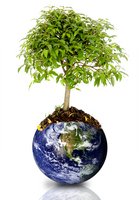Worm-Composting-Scraps
Worms Make Great Compost
You can create a great addition to your gardens by worm-composting-scraps from your leftover foods from the kitchen. This vermicompost, as it is known, can be an addition or alternative to regular composting as we know it.
You need a few basic supplies to get started consisting of bedding for the worms. They love shredded newspaper or you can use shredded computer paper.
Before you lay it down, moisten it and then squeeze out the excess. Loosen it up until it becomes a bit fluffy.
The bedding is put into a worm-bin or large container. Storage containers can be made from wood, but plastic containers are especially good.
Remember to replace the bedding in your worm-bin. The worms eat and digest this too.
To avoid odors, keep your system no deeper than a foot and a half, and 2 feet in width.
Air circulation underneath is important.
There will be some liquid that forms and needs to drain. Drainage is a must as is air circulation so drill a few holes in the bottom of your container.
Your worm-bin should be elevated at least a few inches from the floor. Place a tray underneath to catch the liquid. The liquid is a wonderful tea for your flowers.
Place some red-worms over the bedding and they will start to burrow. Once you place kitchen scraps on top, the worms will make their way back up to the top to feed on them.
Nutrient-Rich Worm-Composting-Scraps
Coffee Pot grounds, egg shells, vegetable cuttings and peelings, peel from fruits, and tea-bags are great for your worm-bin.
If you put in meat or fat, make sure it's only a tiny amount.
People disagree on whether or not these items should be added or not. If you are unsure, just don't.
Worm castings come from the scraps digested by the worms.
As the castings begin to appear, they can be gathered and mixed in with your flower garden, vegetable garden and your potted plants.
Vermicompost-Tips
Keep the lid partially open on plastic containers
Keep a cover on an outdoor container
Remember to fertilize with the liquid drippings
Add your kitchen scraps a bit at a time
Less fruit, more vegetables
Stop adding for awhile if a smell develops
Do not add soil or manure
Don't let temperature fall below freezing
Don't let temperature get much over 70 degrees F.
Worms are sensitive to light. Keep bin in a dark area.
Do not add insecticides, they will kill the worms. Put traps around your container for fruit flies and ants.
Enjoy the world of vermiculture, and you are sure to get help if you need it from staff at any Nursery or Garden Centre.
Leave Worm-Composting-Scraps
Return To Compost Tumblers
Return To Carbon Footprint Defined Home Page

Thanks For Your Support
Green Maven!

Popular Tips
Recycling Tips
Garage Sale Tips
Laundry Room
Green Travel
The Company Money
Eco-Baby Gift
Make A Diaper Cake







